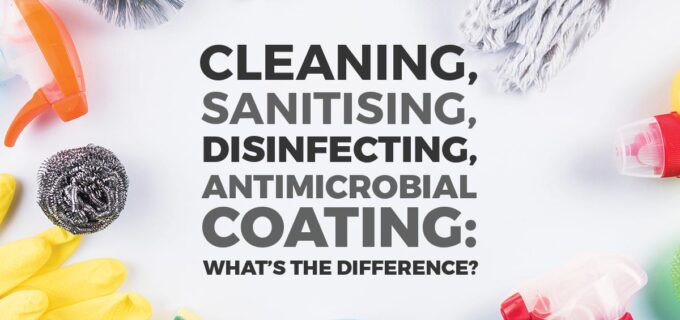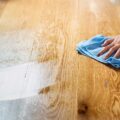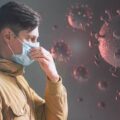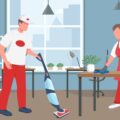Cleaning, Sanitising, Disinfecting, Sterilising and Antimicrobial Coating: What’s the Difference?
In the cleaning industry, professional contractors such as Singapore’s Big Red are often asked to provide technical guidance and professional consultation on what level of decontamination and treatment are required. One of the most common areas of advice provided to clients is on the subject of cleaning and infection control because there is often confusion between the various technical terms.
The advice Big Red offers on this subject is based on the US Centre for Disease Control (CDC) is as follows:
Cleaning is the removal of foreign material (soil, and organic material) from objects and surfaces and is normally accomplished using water with detergents or enzymatic products. Thorough cleaning is required before high-level disinfection and sterilization because inorganic and organic materials that remain on objects or surfaces will interfere with the effectiveness of these processes. If very hot water and detergents are used in the cleaning process, whilst there will also be a substantial reduction in the bacterial and viral loading remaining on the surface it should not be confused with sanitising, disinfection or sterilisation which must achieve their own specific microbial reduction criteria to merit level of accreditation.
Sanitising, by definition, goes a step beyond routine cleaning and is intended to reduce the microbial loading on an object or surface to ensure moderate standards of hygiene. It is usually achieved with hot water and relatively mild antimicrobial solutions. If sanitising is undertaken effectively, a reduction 99% of the microorganism’s present should be achieved. In the language of microbiology, this is known as a ‘2 Log Kill Rate’.
Disinfecting, by definition, is the next highest level of hygiene that once again, is undertaken specifically to significantly reduce the numbers of microorganism’s remaining on an object or surface and in particular the numbers of pathogenic organisms. More professional chemicals and treatments are required to achieve an acceptable level of disinfection which must result in a reduction of at least 99.99% to fulfil the criteria for this definition of hygiene and infection control and achieve a 4 Log Kill Rate.
Sterilising, by definition, is the highest level of hygiene and infection control that can be achieved. Sterilisation is specifically intended to eliminate all microorganisms and pathogens from objects and surfaces. In order to achieve sterilisation, the treatment must result in a reduction of at least 99.9999% to fulfil the criteria for this definition of hygiene and infection control and achieve a 6 Log Kill Rate.
Testing for Different Levels of Cleanliness and Infection Control using ATP and Swabs
There are basically two methods that can be used to determine the different levels of cleanliness, hygiene and infection control according to the definitions above. These are as follows:
- Cleaning – ATP Testing
- Sanitising – ATP Testing and Microbiological Assay (cfu analysis)
- Disinfecting – Microbiological Assay (cfu analysis) only
- Sterilisation – Microbiological Assay and Resilient Spore Testing
Antimicrobial Coating
Differences between BR Shield Self-Cleaning Coating and Disinfectants
Other disinfectants last only a few minutes. Traditional cleaners and disinfectants are effective only when a surface is wet BR Shield creates a durable coating on a surface and continuously works after it dries. However, BR Shield coating protects your surfaces for up to 6 months. The surface coating can be used safely and effectively to control cross-contamination and disease transmission.
How BR Shield Works
Our coating bonds to a treated surface at the molecular level and is not removed by routine cleaning and disinfecting processes. BR Shield has demonstrated to significantly reduce the levels of germs and viruses on treated surface for up to 6 months with a single application. The coating is formulated with a unique molecule that anchors to surfaces and punctures any microbes that come into contact with it mechanically. Under the electron microscope, you can even see the microscopic positively charged spikes puncture and pull the negatively charged microorganism into the coating. Learn more about the science of BR Shield.




